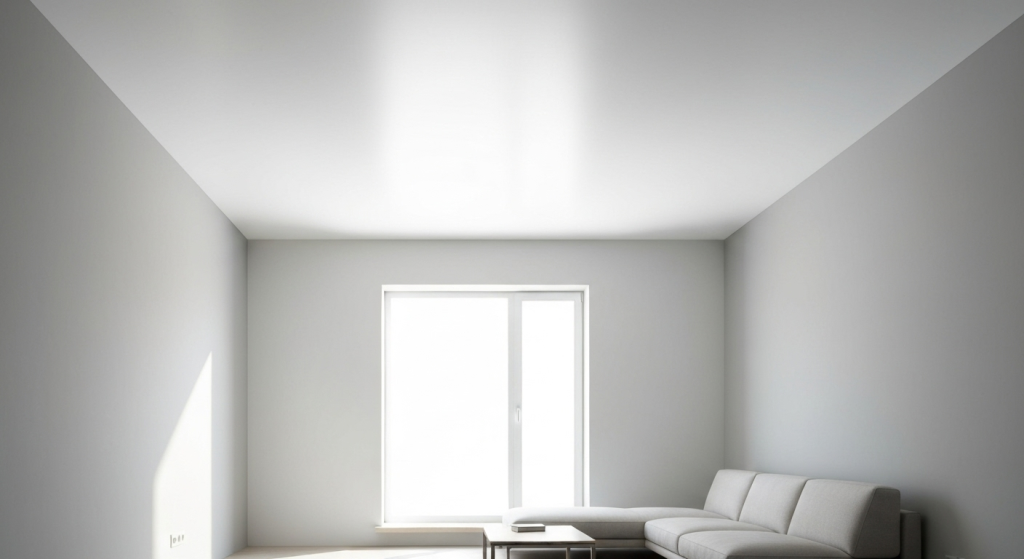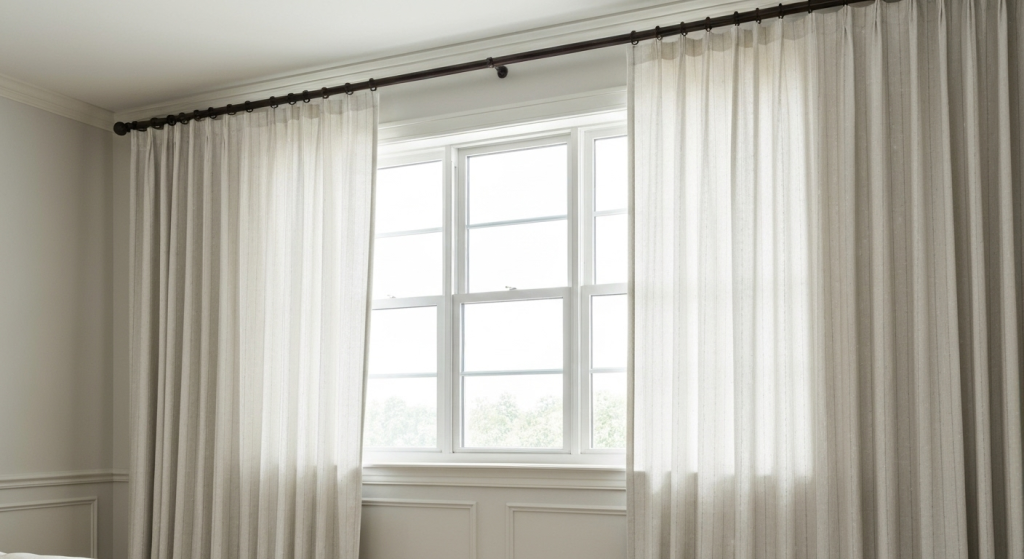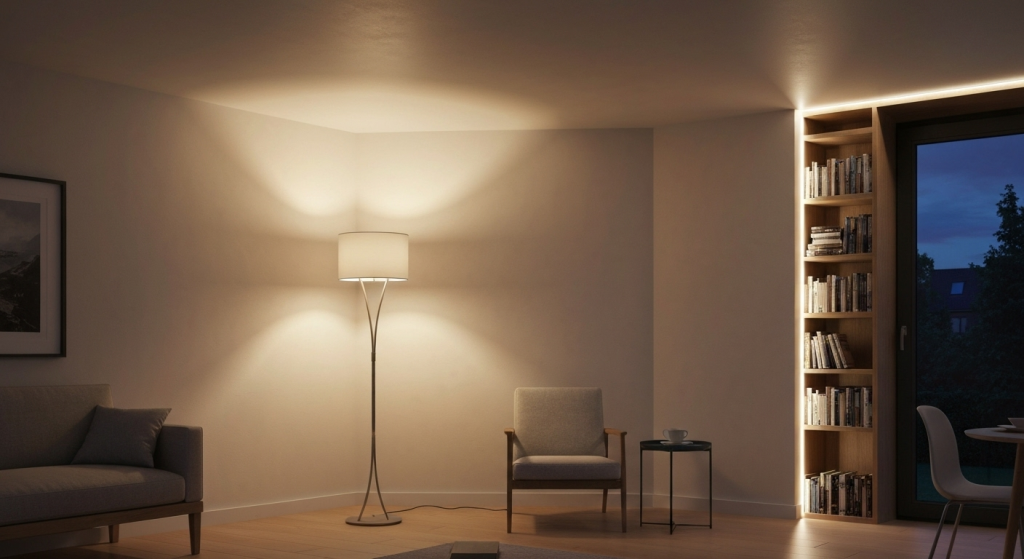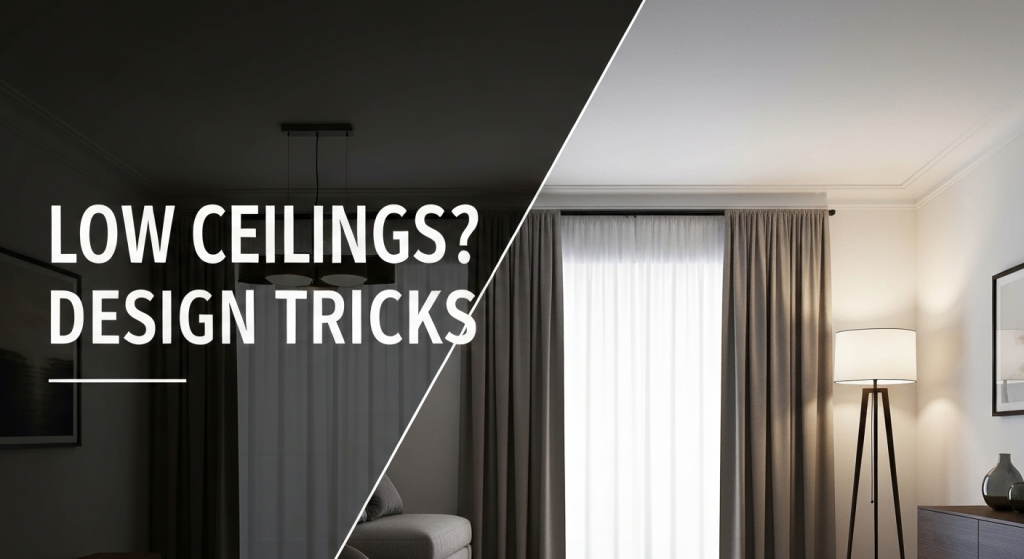Living with low ceilings can make even a spacious room feel cramped and confined. Whether you’re in a cozy basement apartment, a historic home with charmingly low rafters, or a modern condo, that feeling of the ceiling pressing down on you is a common challenge. The good news is you don’t need a major renovation to create a sense of height and airiness. It’s all about clever visual tricks that guide the eye upward and make your space feel more open and expansive.
My name is William Johnson, and I’ve been exploring and writing about the world of home decor for years. My passion isn’t just about following trends; it’s about understanding the “why” behind design choices and finding practical solutions that make people truly love their homes. Over the past five years of working on different projects and spaces, I’ve seen firsthand how a few smart adjustments can completely transform a room. This article isn’t about expensive overhauls but about sharing the knowledge and real-world techniques I’ve learned to help you overcome the low-ceiling dilemma.
Let’s break down some of the most effective strategies I’ve used to visually lift a ceiling and open up a room.
The Power of Paint and Color
Before you move a single piece of furniture, the most impactful change you can make is with paint. Color and finish have a profound effect on how we perceive space. Using them strategically is your first and best line of defense against a low ceiling.
Paint the Ceiling White (or a Lighter Shade)

This is the oldest trick in the book for a reason: it works. Dark colors tend to advance or feel closer, while light colors recede, feeling farther away. By painting your ceiling a crisp, clean white, you create an illusion of it being higher than it actually is. It reflects more light around the room, making the entire space feel brighter and more open.
But what if you don’t want stark white? No problem. The key is to choose a color that is significantly lighter than your wall color. A very pale blue can evoke the feeling of the sky, and a soft, barely-there gray can add sophistication while still providing that lifting effect. The goal is to create a contrast that draws the eye upward and lets the ceiling “float” above the walls.
Choosing the Right Sheen
The finish of your paint matters almost as much as the color. A shiny surface reflects light, which can create the illusion of depth and height. However, a high-gloss ceiling can also reflect imperfections, so it’s a trade-off.
Here’s a simple breakdown of ceiling paint sheens:
| Sheen | Reflectivity | Pros | Cons |
| Flat/Matte | Very Low | Hides imperfections well. Creates a soft, uniform look. | Absorbs light. Can be difficult to clean. |
| Eggshell/Satin | Low to Medium | Has a slight sheen that reflects some light. More durable and easier to clean than flat. | Can show some imperfections like roller marks. |
| Semi-Gloss | High | Highly reflective, bounces a lot of light around. Very durable and easy to clean. | Highlights every single flaw on the ceiling surface. |
For most rooms with low ceilings, a flat or matte finish in a bright white is the safest and most effective choice. It provides the best illusion of height by minimizing texture and creating a smooth, uninterrupted plane. If your ceiling is in perfect condition, a satin finish can add a subtle glow that helps lift the space.
The Single-Color Trick (Monochromatic Magic)
Here’s a technique that feels a bit counterintuitive but works wonders. Instead of creating contrast, you eliminate it. Painting the walls, trim, and ceiling all in the same light color—like a soft white, a creamy beige, or a pale gray—blurs the lines where the walls end and the ceiling begins.
When the eye can’t find a clear stopping point, the room feels taller and more seamless. This approach creates a sophisticated, cohesive look that makes the entire space feel larger and more unified. I used this method in a small den with 7.5-foot ceilings, and the owner was amazed at how the room instantly felt more like a cloud and less like a box.
Master Your Window Treatments
How you dress your windows can either emphasize the lack of height or become a powerful tool to create it. Standard curtain placement can visually chop a wall in half, making the ceiling feel even lower.
Hang Curtains High and Wide

This is my single favorite trick because it’s so simple yet so dramatic. To draw the eye upward, you need to create strong vertical lines.
- Go High: Mount your curtain rod as high as possible. Don’t place it just above the window frame. Instead, install it 4-6 inches below the ceiling line. This simple change forces the eye to travel all the way up, creating the illusion of a much taller wall.
- Go Wide: Extend the curtain rod 6-12 inches on either side of the window frame. When the curtains are open, they will frame the window without blocking any glass. This makes the window appear larger and allows the maximum amount of natural light to flood the room, which also contributes to a feeling of openness.
The result is an elegant, soaring look that adds instant architectural grace, even in a basic room.
Choose the Right Fabric and Pattern
The type of curtains you choose is just as important as where you hang them.
- Fabric: Opt for lightweight fabrics like linen, cotton, or sheer voiles. These materials feel airy and don’t weigh down the room. Heavy, thick drapes like velvet can feel bulky and make the space seem smaller.
- Color: Match the curtain color closely to the wall color. This creates a continuous, unbroken line that enhances the feeling of height. If you want a bit of contrast, choose a color just a shade or two different from the walls.
- Pattern: If you love patterns, choose ones with a strong vertical orientation. Vertical stripes are the most obvious choice, as they naturally draw the eye up and down. Avoid bold horizontal patterns, as they will have the opposite effect, making the room feel wider but shorter.
| Curtain Style for Low Ceilings | Why It Works | Why It Doesn’t Work |
| Vertical Stripes | Creates a strong visual line that leads the eye upward, enhancing height. | Bold, high-contrast stripes can sometimes feel overwhelming in a small space. |
| Solid, Light Colors | Blends with the wall color for a seamless, elongating effect. Maximizes light. | Can feel plain if not paired with other textures in the room. |
| Sheer Fabrics | Allows maximum light to enter, making the room feel airy and open. | Offers limited privacy. |
| Heavy Drapes/Horizontal Patterns | Visually weighs down the space and draws the eye sideways, not upward. | N/A – Generally to be avoided. |
Smart Lighting Strategies
Lighting is a crucial element in any design, but in a room with low ceilings, it’s a game-changer. The wrong light fixture can visually lower the ceiling even further, while the right strategy can make it seem to disappear.
Embrace Uplighting

The goal is to draw attention away from the floor and towards the ceiling. Uplighting does exactly that. It’s any form of lighting that directs its beam upward, washing the ceiling in a soft, diffused glow. This makes the ceiling feel lighter and more distant.
Here are a few ways to achieve this:
- Torchiere Floor Lamps: These lamps are designed to shoot light straight up. Place one in a dark corner to instantly lift the space.
- Wall Sconces: Install sconces that direct light upward. Placed strategically along a wall, they can create beautiful scallops of light on the ceiling, adding both height and ambiance.
- Hidden LED Strips: For a more modern and integrated look, you can place LED light strips on top of tall bookcases or cabinets. The hidden light source provides a beautiful, indirect glow that makes the ceiling seem to float.
Ditch the Low-Hanging Fixtures
In a room with low ceilings, a dramatic pendant light or a large chandelier is often a mistake. Anything that hangs down significantly into the room’s vertical space will draw attention to the lack of height and create a visual barrier. I’ve walked into so many rooms where a beautiful (but too large) fixture made the 8-foot ceiling feel like it was only 6 feet high.
Instead, opt for lighting that sits close to the ceiling:
- Flush Mounts: These fixtures attach directly to the ceiling, taking up minimal vertical space. Modern flush mounts are available in many stylish designs that don’t sacrifice aesthetics.
- Semi-Flush Mounts: These hang just a few inches from the ceiling, offering a bit more decorative presence than a flush mount without encroaching too much on your headspace.
- Recessed Lighting (Pot Lights): This is an excellent solution as the fixtures are set into the ceiling itself, creating a clean, unobtrusive look. They provide great overall illumination without taking up any visual space.
Furnish with Height in Mind
Your furniture choices play a huge role in the perception of space. Bulky, oversized furniture can quickly overwhelm a room with a low ceiling, while sleek, well-proportioned pieces can enhance the feeling of openness.
Choose Low-Profile Furniture
This is a core principle for furnishing rooms with low ceilings. Low-profile furniture—sofas, chairs, coffee tables, and media consoles that sit lower to the ground—creates more visible wall space between the top of the furniture and the ceiling. This expanse of open wall gives the illusion of more height. Look for mid-century modern designs, which often feature low backs and clean lines, making them perfect for these spaces.
Go Tall and Skinny with Accent Pieces
While your main furniture should be low-slung, you should strategically incorporate a few tall, narrow pieces to draw the eye upward. This creates a pleasing contrast and reinforces the vertical illusion you’re aiming for.
Good examples include:
- Tall, narrow bookcases: An “étagère” or ladder-style shelf is perfect because its open design doesn’t feel heavy.
- A tall, slender floor lamp: This serves the dual purpose of providing uplighting and creating a vertical line.
- A single, tall plant: A fiddle-leaf fig or a snake plant in a simple planter can add a touch of nature and height.
The key is balance. Use a few tall accents, but don’t clutter the room with them. Their power comes from their contrast with the lower-profile pieces.
Strategic Decor and Mirror Placement
The final touches—artwork, mirrors, and decor—are your opportunity to reinforce all the hard work you’ve done with paint, lighting, and furniture.
Use Mirrors to Your Advantage
Mirrors are a designer’s best friend for making any space feel larger and brighter. For low ceilings, a tall, vertically-oriented mirror is particularly effective.
- Lean, Don’t Hang: Leaning a large, full-length mirror against a wall is a modern and impactful look. It reflects the entire room, including the ceiling, creating an incredible sense of depth and height.
- Vertical Placement: If you’re hanging a mirror, choose one with more height than width and place it on a prominent wall. It will reflect light and trick the eye into seeing a taller space.
Directing the Eye with Artwork
The way you hang your art can also influence the perception of height.
- Go Vertical: Instead of a single large horizontal piece of art, consider a gallery wall arranged in a vertical column. This encourages the eye to scan up and down rather than side to side.
- Hang Slightly Higher: A subtle but effective trick is to hang your artwork a few inches higher than the standard eye level. This slight adjustment can help to lift the entire room’s focal point. Just be careful not to hang it so high that it looks disconnected from the furniture below.
Frequently Asked Questions
What is the best paint color for low ceilings?
A bright, crisp white in a flat or matte finish is almost always the best choice. It reflects the most light and creates the illusion of receding, making the ceiling appear higher. If you want a hint of color, choose a shade that is significantly lighter than your walls, like a very pale blue or soft off-white.
Do crown moldings make a low ceiling look lower?
It depends. Wide, ornate crown molding can draw a thick horizontal line around the room, which can visually lower the ceiling. However, if you paint the crown molding the exact same color as the ceiling, it can help blur the transition from wall to ceiling, sometimes adding a sense of height. For most situations with truly low ceilings (under 8 feet), it’s often best to skip crown molding altogether.
Can I use a ceiling fan in a room with a low ceiling?
Yes, but you must choose the right one. Opt for a “hugger” or low-profile ceiling fan that mounts directly to the ceiling without a downrod. Choose a fan with blades that are the same color as the ceiling (usually white) so it blends in and doesn’t become a heavy focal point.
Are accent walls a good idea for rooms with low ceilings?
Generally, it’s best to avoid them. A dark, high-contrast accent wall can make a room feel smaller and draw attention to its proportions. If you really want an accent, consider using vertical stripes in a subtle, tone-on-tone pattern or applying a wallpaper with a delicate vertical design to create that upward movement without closing in the space.
Tying It All Together
Living with a low ceiling doesn’t mean you have to live in a space that feels small or dark. By using these design tricks, you can master the art of illusion to create a home that feels open, airy, and inviting. It’s all about directing the eye, playing with light, and making intentional choices with your colors, furniture, and decor. Start with one or two of these ideas, and you’ll be amazed at the difference they can make in transforming your space from cramped to cozy and elegant.


